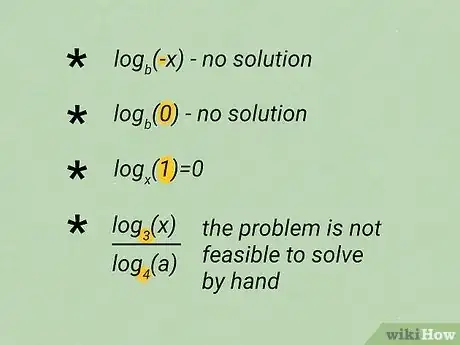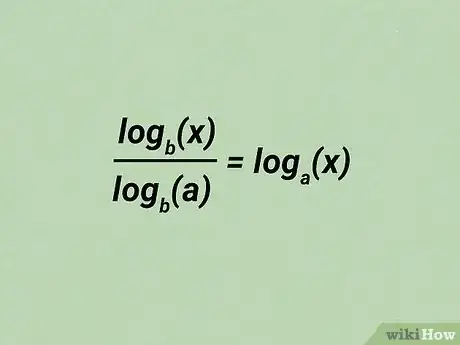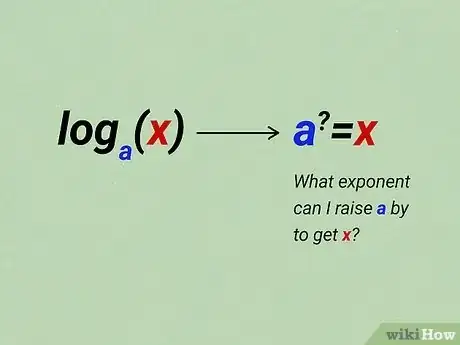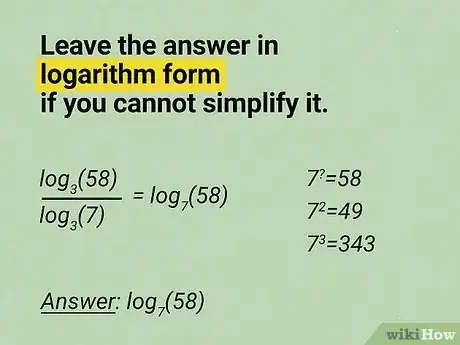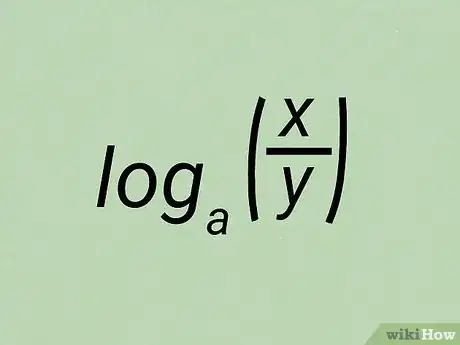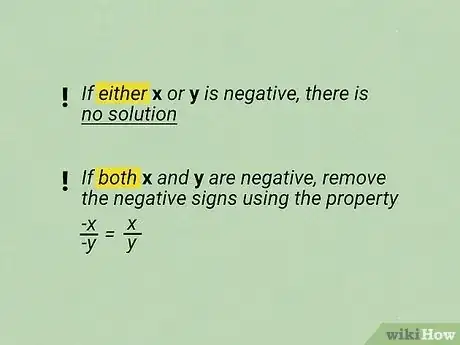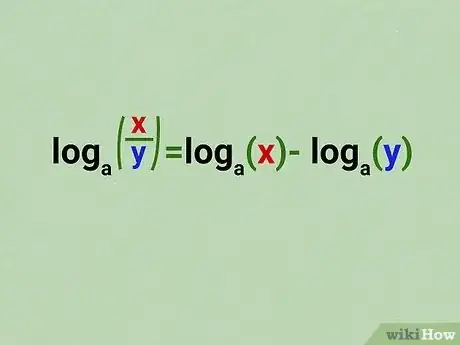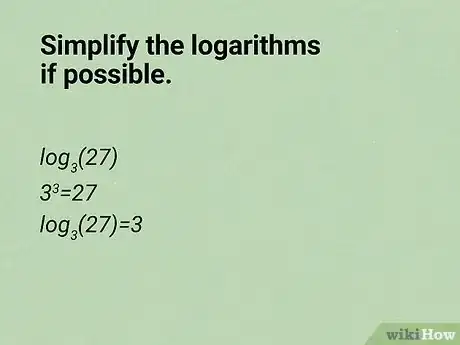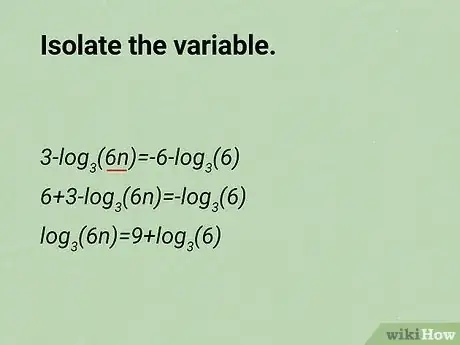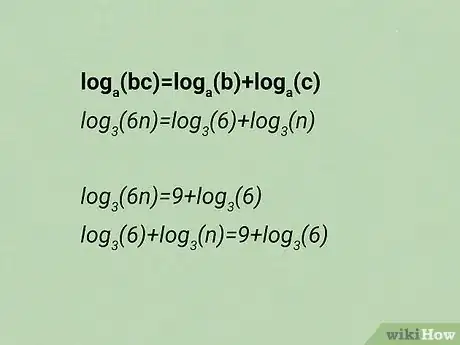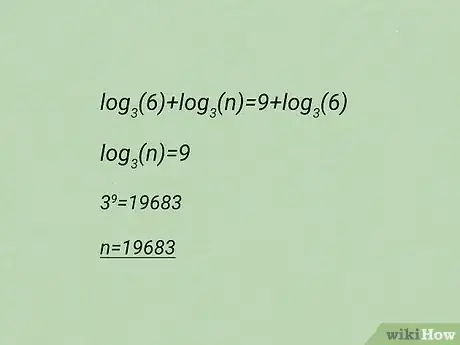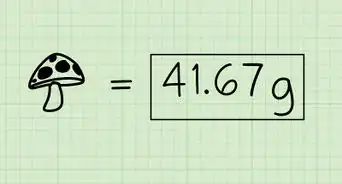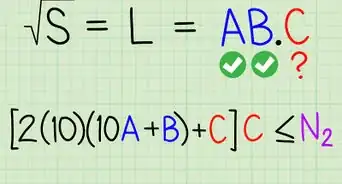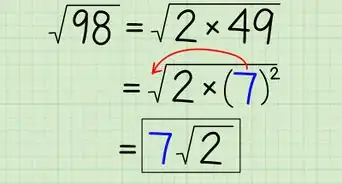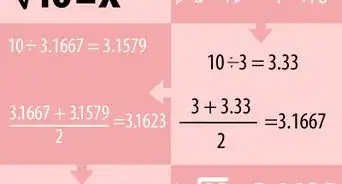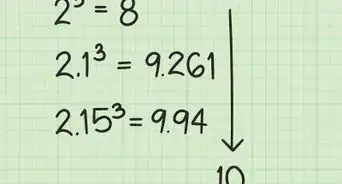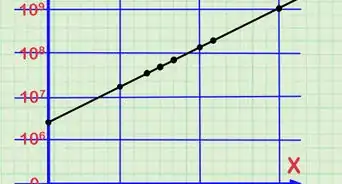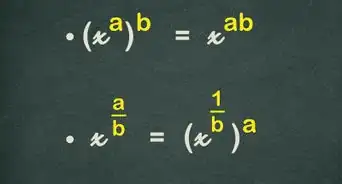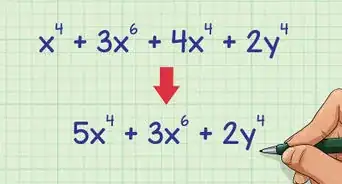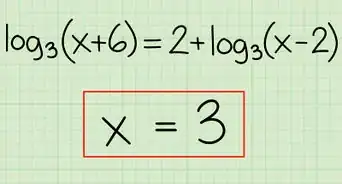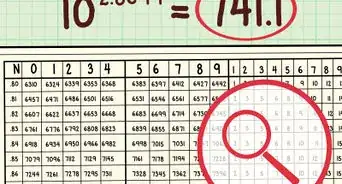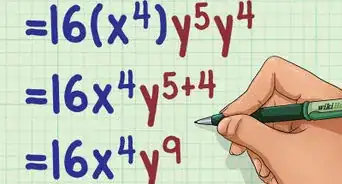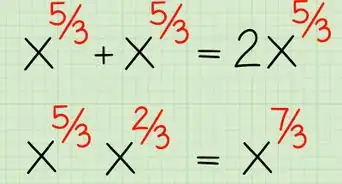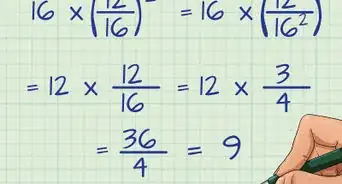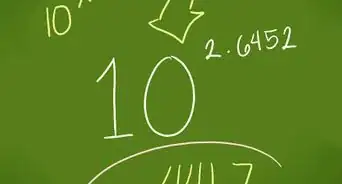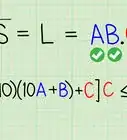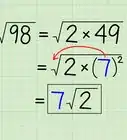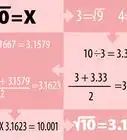This article was co-authored by wikiHow Staff. Our trained team of editors and researchers validate articles for accuracy and comprehensiveness. wikiHow's Content Management Team carefully monitors the work from our editorial staff to ensure that each article is backed by trusted research and meets our high quality standards.
There are 7 references cited in this article, which can be found at the bottom of the page.
This article has been viewed 168,820 times.
Learn more...
Logarithms may look difficult to use, but just like exponents or polynomials, you just need to learn the correct techniques. You only need to know a couple basic properties to divide two logarithms of the same base, or to expand a logarithm that contains a quotient.
Steps
Dividing Logarithms by Hand
-
1Check for negative numbers and ones. This method covers problems in the form . However, it does not work for a few special cases:[1]
- The log of a negative number is undefined for all bases (such as or ). Write "no solution."
- The log of zero is also undefined for all bases. If you see a term such as , write "no solution."
- The log of one in any base () always equals zero, since for all values of x. Replace that logarithm with 1 instead of using the method below.
- If the two logarithms have different bases, such as , and you cannot simplify either one into an integer, the problem is not feasible to solve by hand.
-
2Convert the expression into one logarithm. Assuming you did not find any of the exceptions above, you can now simplify the problem into one logarithm. To do this, use the formula .[2]
- Example 1: Solve the problem .
Start by converting this into one logarithm using the formula above: . - This formula is the "change of base" formula, derived from basic logarithmic properties.
Advertisement - Example 1: Solve the problem .
-
3Calculate by hand if possible. Remember, to solve , think "" or "What exponent can I raise a by to get x?" It's not always feasible to solve this without a calculator, but if you're lucky, you'll end up with an easily simplified logarithm.[3]
- Example 1 (cont.): Rewrite as . The value of "?" is the answer to the problem. You may need to find it by trial and error:
16 is what you were looking for, so = 4.
- Example 1 (cont.): Rewrite as . The value of "?" is the answer to the problem. You may need to find it by trial and error:
-
4Leave the answer in logarithm form if you cannot simplify it. Some logarithms are very difficult to solve by hand. You'll need a calculator if you need the answer for a practical purpose. If you're solving problems in math class, your teacher most likely expects you to leave the answer as a logarithm. Here's another example using this method on a more difficult problem:[4]
- Example 2: What is ?
- Convert this into one logarithm: . (Notice that the 3 in each initial log disappears; this is true for any base.)
- Rewrite as and test possible values of ?:
Since 58 falls between these two numbers, has no integer answer. - Leave your answer as .
Working with the Log of a Quotient
-
1Start with a division problem inside a logarithm. This section helps you solve problems that include expressions in the form .[5]
- For example, start with this problem:
"Solve for n if ."
- For example, start with this problem:
-
2Check for negative numbers. The logarithm of a negative number is undefined. If x or y are a negative numbers, confirm that the problem has a solution before you continue:[6]
- If either x or y is negative, there is no solution to the problem.
- If both x and y are negative, remove the negative signs using the property
- There are no logarithms of negative numbers in the example problem, so you can continue to the next step.
-
3Expand the quotient into two logarithms. One useful property of logarithms is described by the formula . In other words, the log of a quotient is always equal to the log of the numerator minus the log of the denominator.[7]
- Use this to expand the left side of the example problem:
- Substitute this back into the original equation:
→
- Use this to expand the left side of the example problem:
-
4Simplify the logarithms if possible. If any of the new logarithms in the expression have an integer answer, simplify them now.[8]
- The example problem has a new term: . Since 33 = 27, simplify to 3.
- The full equation is now:
-
5Isolate the variable. Just like any algebra problem, it helps to isolate the term with the variable on one side of the equation. Combine like terms whenever possible to simplify the equation.
-
.
-
-
6Use additional properties of logarithms when necessary. To isolate the variable from other terms inside the same logarithm, rewrite the term using other logarithm properties.
- In the example problem, the n is still trapped inside the term .
In order to isolate the n, use the product property of logarithms:
- Substitute this back into the full equation:
- In the example problem, the n is still trapped inside the term .
-
7Continue simplifying until you find the solution. Repeat the same algebra and logarithmic techniques to solve the problem. If there is no integer solution, use a calculator and round to the nearest significant figure.[9]
-
Since 39 = 19683, n =19683
-
Community Q&A
-
QuestionHow would a number like -4.2256/-3 be divided?
 Community AnswerThe negative signs will cancel each other, so you will be left with 4.2256 / 3. Then just divide as usual.
Community AnswerThe negative signs will cancel each other, so you will be left with 4.2256 / 3. Then just divide as usual. -
QuestionWhat is the square root of 2500?
 DanoyachtcaptTop AnswererThis article will help you use your brain to figure it out: How to Multiply Square Roots.
DanoyachtcaptTop AnswererThis article will help you use your brain to figure it out: How to Multiply Square Roots. -
Questionlog √2/log 9, how can such be solved?
 DonaganTop AnswererThe log of √2 (the log of 1.414) is 0.150. The log of 9 is 0.954. 0.150 / 0.954 = 0.157.
DonaganTop AnswererThe log of √2 (the log of 1.414) is 0.150. The log of 9 is 0.954. 0.150 / 0.954 = 0.157.
References
- ↑ https://www.mathsisfun.com/algebra/logarithms.html
- ↑ https://www.khanacademy.org/math/algebra2/exponential-and-logarithmic-functions/introduction-to-logarithms/v/fancier-logarithm-expressions
- ↑ https://www.youtube.com/watch?v=EYgixFU9ZkY
- ↑ https://www.youtube.com/watch?v=EYgixFU9ZkY
- ↑ https://people.richland.edu/james/lecture/m116/logs/properties.html
- ↑ https://www.rapidtables.com/math/algebra/logarithm/Logarithm_of_Negative_Number.html
- ↑ https://people.richland.edu/james/lecture/m116/logs/properties.html
- ↑ https://flexbooks.ck12.org/cbook/ck-12-elementary-intermediate-college-algebra/section/11.9/primary/lesson/simplifying-and-expanding-logarithms-c-alg/
- ↑ https://math.libretexts.org/Courses/Mission_College/Mat_1_College_Algebra_(Carr)/05%3A_Exponential_and_Logarithmic_Functions/5.06%3A_Logarithmic_Properties
About This Article
To divide logarithms by hand, start by checking for negative numbers and ones. If you don’t find any exceptions to the standard rules, you can simplify the problem into 1 logarithm. Whenever possible, calculate the problems by hand, but, if need be, you can use a calculator to help. If you can’t simplify the problem, leave the answer in logarithmic form. To learn how to work with the log of a quotient, keep reading!
